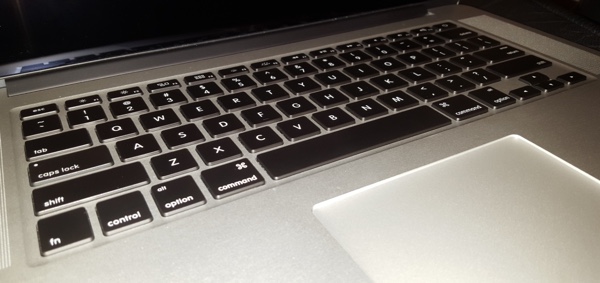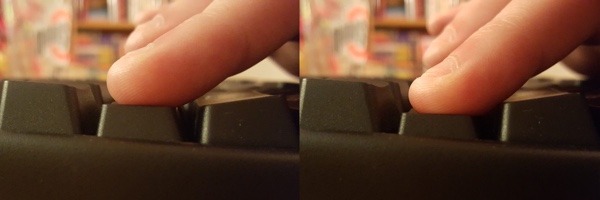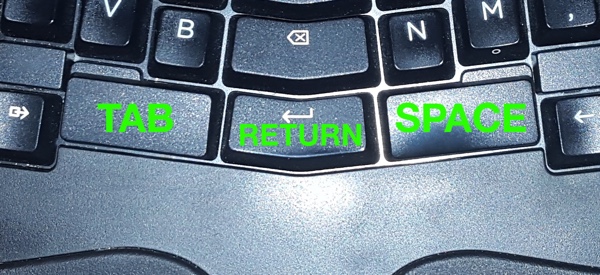Buy a Better Keyboard Already
Picture a carpenter without a saw. A guitarist with no strings. A coder with no keyboard. Look down for a moment. Those roughly one hundred keys have been between you and every line of code you’ve written.
Be honest, how much thought have you given to your keyboard? Are you using the one that came in the box or that the company put on your desk? From what I’ve seen, most of you are.
Chefs don’t cut with dull knives. Stop programming with a shitty keyboard.
Reader Beware
I could tell you what to buy but it would be bad advice. It might not work for you. The key is knowing your options and finding a fit. In order to do that you’ll need to consider three areas. First, what kind of keys do you like. Second, what layout do prefer for those keys. Third, are there bells and whistles that add value. What comes below is a bit of fact and a bit of opinion. I’m sure you can sort it out.
Keys
You’ve typed before so you’re already familiar with the two basic styles of key. There are the cylindrical ones found on most external keyboards and the flat found on laptops.
Let’s start with the flat keys. Some people swear by them. Apple makes nothing but flat key keyboards. Laptops, desktops, super powerful trashcans, it doesn’t matter. All flat keyboards.

Those who enjoy flat keys usually site two advantages. The keys on your laptop match the keys on your external board. This provides a consistency when switching between them. I don’t find this argument particularly compelling. If you like the keys then fine. If you don’t, why punish yourself for the sake of consistency?
The other advantage is low key travel. Key travel is the distance a key must be pressed down in order to activate.
Flat keys basically come in one flavor, membrane. Meaning there is a layer that you depress until it activates a circuit. There are some fancier scissor and butterfly switches but ultimately they suffer the same fate. In order to activate the key you have to “bottom out”. That means you have to depress the key until you hit a physical boundary that pushes back.
The other style, cylindrical, comes in two flavors, membrane and mechanical. Mechanical keys do not require that you “bottom out” to activate them.

The image on the left shows the activation point. On the right you see the key bottoming out. That difference means each key press doesn’t have to end with a jarring thud. It’s a little easier on the fingers when they’re not hammering away all day.
Mechanical keys are also known for something else. They can be loud, clicky, or both. You may eventually get used to it. Your cohorts may not.
Mechanical keys come in a variety of styles designated by the color of the switch. Blue are known for being clicky. Brown are quieter but give less indication that they’ve activated. You could buy a bunch of keyboards to figure out what color you like. If you have bags of VC cash and a need to increase your burn rate then go for it. Everyone else can buy a key tester. It’s a row of different switches ready to be tested.

It even comes with sound dampening o-rings to try out. They help make the keys quieter and cushier.
Finally, there are the cylindrical keys that use membranes. They’re like the flat keys with none of the advantages.
Layout
Keyboards group into three layouts. You have standard, split, and WTF.
The standard layout is, well, standard. It was adapted from a typewriter. The layout was designed to accommodate the mechanics of the machine and not the health of the user.
The second in the list is the split or “natural” keyboard. They separate the left hand keys from the right hand keys. Splitting like this allows your wrists to be straight as you type rather than slightly outward.
I know that brains can’t always be trusted. Over the years, I’ve looked for studies that show health differences based on keyboard layout. There isn’t much to go on and the studies that have been done aren’t definitive. So, instead of valid data, I’ll regale you with an anecdote.
Long ago, before I had any wrist pain or any immediate reason to switch I bought a Microsoft Natural Ergonomic Keyboard 4000.

I did this planning for a long career with lots of typing. I wanted to be proactive. The problem was I had no wrist pain to begin with. I had no way of knowing if it helped.
A bit later I was forced to do some work in a computer lab. Thirty minutes in and I realized that my wrists were starting to hurt. Even today if I spend too long typing on a standard keyboard I can feel it.
If you want to try one out on the cheap I recommend my old board. The Microsoft NEK 4000 is an inexpensive ($22 as of now) way to go.
My current choice is a Truly Ergonomic Model 229 which falls squarely into the WTF category. Other examples include keyboards like the Kinesis Advantage or the Keyboardio. Basically anything where the keys are not where you’d expect them to be.

Notice the placement of Ctrl, the braces (on the left), the return key (between the space bars). I won’t lie, WTF keyboards will feel weird and awkward for a while. It’ll take even longer to get comfortable switching between one and a laptop.
So, why bother? I’ll speak to the one I use.
It has mechanical keys which I enjoy. I selected the browns so they wouldn’t be too loud. The keyboard itself is compact thus cutting down on my reach to my trackpad. The columns of keys don’t all stagger to the right as you go down (look at Q, A, and Z). Extending my fingers forward on either hand moves them to the letter above instead of some murky middle ground between keys. It also has some neat extras.
Bells and Whistles
The final thing to consider is the extras. You’ll find features like n-key rollover which means you can make crazy shortcuts that require six keys to be held down at once. Some, like the CODE keyboard are backlit. You’ll find DIP switches that allow you to toggle keys for different operating systems. In the case of the Truly Ergo it’s firmware programmable from a drag and drop interface on their website. One of my favorite changes was making the left space bar key a tab key.

It’s fantastic!
You can even replace your keycaps. Want arrow keys instead of W, A, S, and D? Want a ಠ_ಠ key? You can do that. Wish your keys were royal blue or mint green? Whatever makes you happy.
Buy One Already
Depending on what you do it might be time to hit the bank. You may have to pay $150 - $300 dollars for a good setup. It doesn’t have to be expensive, but don’t be afraid to spend. Remember, this is an investment in a tool that you’ll use hours a day for years.
So do it already! Go out, try one out, pimp it out, make your keyboard work for you. Just don’t keep using that thing they gave you.
Take a look at the next part, which software maximizes your keyboard.
